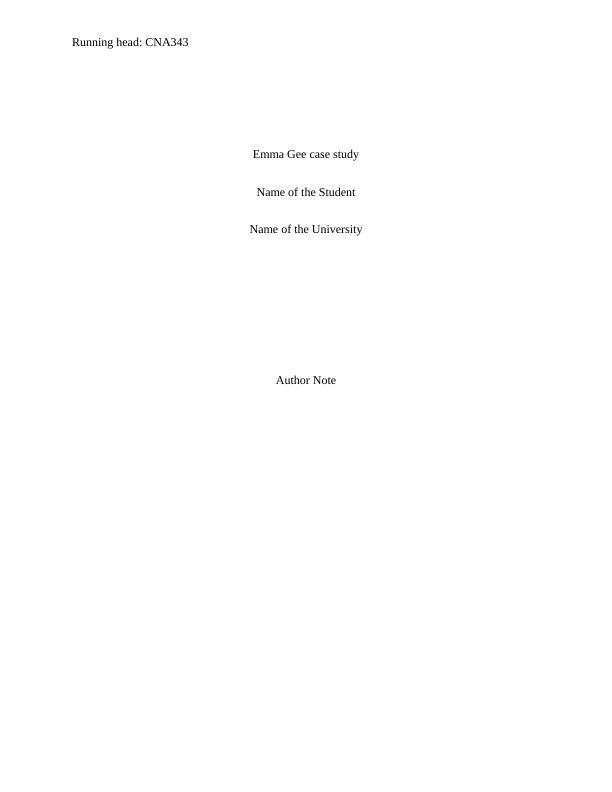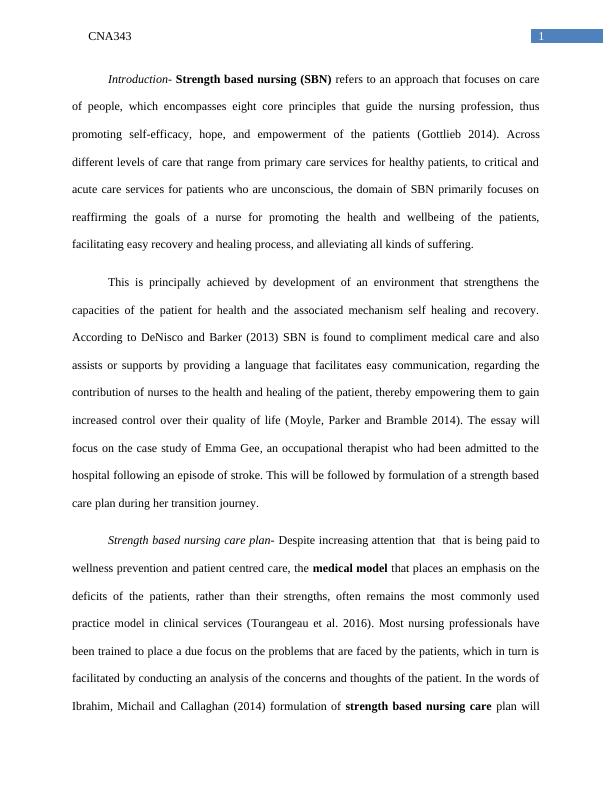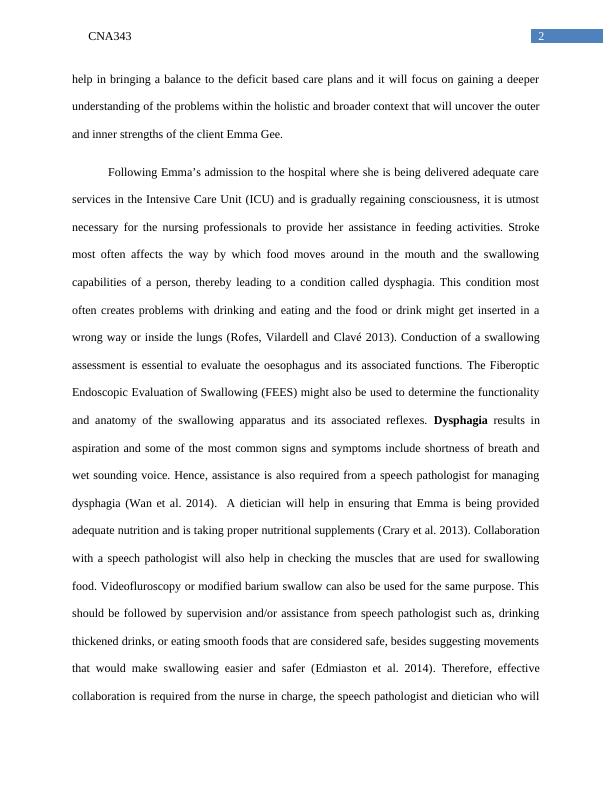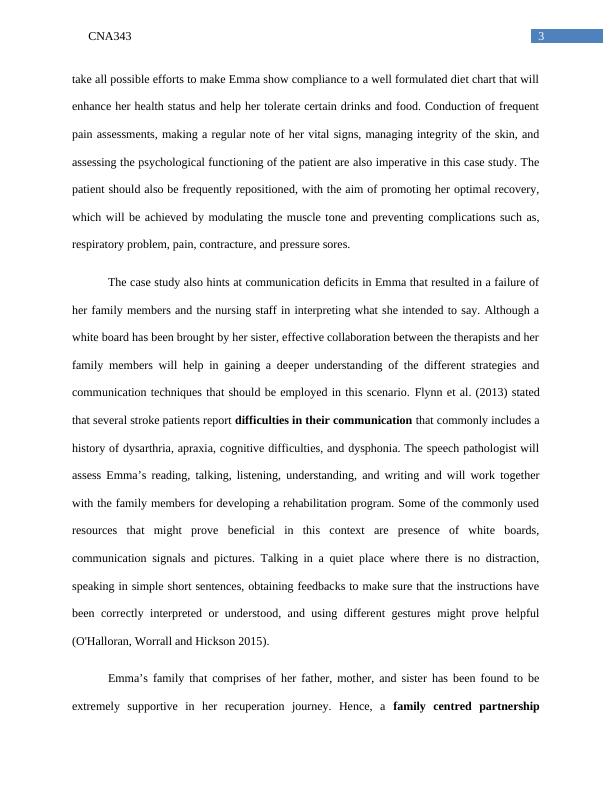Strength Based Nursing Care Plan for Emma Gee: A Case Study
Develop a discussion on how strengths-based nursing and healthcare could be implemented for Emma at any point of her journey, or across the whole of her journey (hypothetically as if Emma was to experience her healthcare journey again).
13 Pages3788 Words197 Views
Added on 2023-06-03
About This Document
This essay discusses the strength based nursing approach for Emma Gee, an occupational therapist who had been admitted to the hospital following an episode of stroke. It includes a strength based care plan, rehabilitation admission, and discharge planning. The essay also highlights the importance of patient empowerment, partnership and collaboration, therapeutic relationship, and cultural competence in nursing care.
Strength Based Nursing Care Plan for Emma Gee: A Case Study
Develop a discussion on how strengths-based nursing and healthcare could be implemented for Emma at any point of her journey, or across the whole of her journey (hypothetically as if Emma was to experience her healthcare journey again).
Added on 2023-06-03
ShareRelated Documents
End of preview
Want to access all the pages? Upload your documents or become a member.
Strength-based Nursing and Healthcare Emma Gee Case Study
|13
|3527
|616
CNA343 Strengths Based Nursing & Healthcare
|12
|3660
|621
Strength-Based Nursing and Healthcare Plan for Emma | Desklib
|10
|3180
|141
CNA343 Marking Rubric for Assessment
|15
|3931
|138
Case Study of Emma Gee: Strengths-based nursing synthesising principles and values of nursing
|10
|2607
|139
Emma's Strength Based Nursing Approach
|12
|4045
|356




